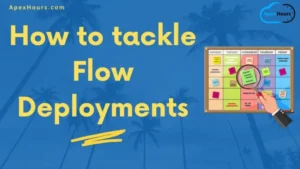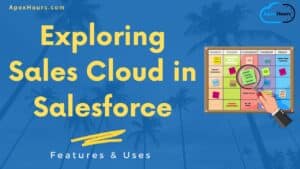Let’s start by understanding what Service Cloud-Omnichannel. Service Cloud is built on the Salesforce Customer Success Platform. It provides a 360-degree view of your customers and enables you to deliver smarter, faster, and more personalized services. For more insights on Service Cloud and its key features, check out my Introduction to Service Cloud blog.
Let’s get straight to the topic and understand what it is and in how many ways it can be configured.
What is Omni-Channel Routing?
The Word “Channel” means communication via phone, web, email, etc, and the word “Omni” means one way to get this communication through and reach out to the customers to solve their issues.
Service Cloud Omni-Channel is a feature that can be used in the Sales or Service Console, which, once enabled and configured, automatically pushes work to your users in real-time. Omni-Channel checks the assigned work items and then will route the work items to the most qualified support agents using the routing criteria you define.
There are three ways from which we can do Service cloud Omni-Channel Routing
1. Queue-Based Routing
When you set up queue-based routing, the first step would be creating a queue, setting the queue priority, and assigning agents to it. A queue can represent a skill, such as speaking German; expertise, such as technical installation; or a company department, such as Payment.
When a work item is created, it automatically gets assigned to a queue. If that queue is associated with a Routing Configuration, it’s added to a list of items still waiting to be routed to agents. Then comes the part where Omni-Channel determines which agents are available and how much work each agent is working on.
- Omni-Channel assigns work items to a queue
- Pushes work items to an agent who is a member of that queue.
Best Use Case- It is best for smaller organizations that support a limited number of products.
2. Skill-Based Routing
Skills-based routing looks at the skills required to complete a work item and matches these to the skills assigned to the agent. Omni-Channel routes the work to the first agent who has the required skills. Work items can have multiple skills, and agents can have various skills. If you want to route work by skills, you must use a setup flow to define mappings between work-item field values and skills. You have to create one skill mapping set for each object.
To determine how to route the work, whenever Omni-Channel receives a new work item, it looks at the required skills, the work’s priority, and the routing model (Least Active or Most Available).
Best Use Case– It is best for larger organizations that:
- Have many agents that support many products.
- Support products that require complex skill sets.
- Support customers in many countries or across multiple languages.
3. External Routing
A third-party routing implementation of your choice routes work items through Omni-Channel to agents via the Salesforce Service Console. A developer will use APIs to integrate the partner routing application with
Salesforce.
Best Use Case– It is best for organizations that want to route work to the Salesforce Service Console while keeping the routing implementation that the organization currently uses.
Omni-Channel will always come into the picture when a case is assigned and will always give cases to suitable support agents so the customers will also be happy with customer service.
The support managers can also get a holistic view of everything at the contact center. Do you know how? Let me tell you!
Omni-Channel Supervisor is the answer, wherein supervisors and managers to check on the health of their call center. Supervisors can always track how their agents, queues, skills, and work items are doing. And, if they require more details, they can simply click on any agent, queue, or work item to see more details, and that too without leaving Omni-Channel Supervisor. Isn’t that cool? I know it is.
Omni-Channel Supervisor can do more such cool stuff like supporting both queue- and skills-based routing. When using queue-based routing, you can see the Agents, Queue Backlog, and Assigned Work tabs. You can see the Agents, Skills Backlog, and Assigned Work tabs when you use skill-based routing. And, if you’re using both queue-based routing and skills-based routing, you can see all the tabs.
Learn more about Omni-Channel Routing.
Service Cloud-Omnichannel Video
Summary
The keynote is you don’t have to refresh data whenever you are in Omni-Channel Supervisor–the data updates automatically. Check our FREE Salesforce Service Cloud Training.





